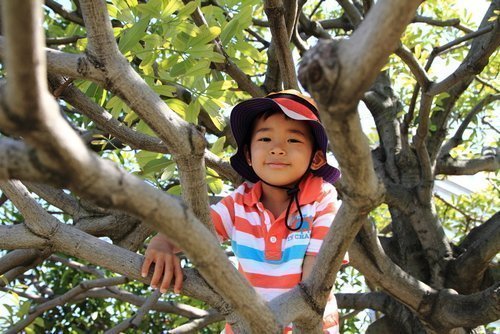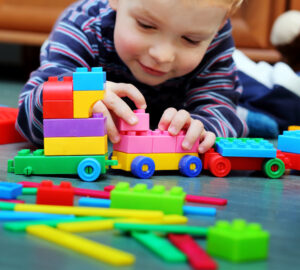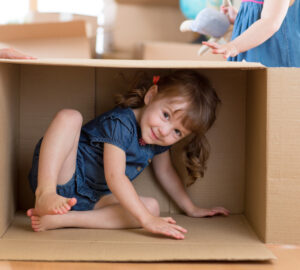What’s The Risk?
Allowing children to take risks is counterintuitive to our instinct to keep them safe. The code of ethics utilized by Early Childhood Practitioners states, “Above all, we shall not harm children,” but are we harming them by bubble-wrapping playgrounds and eliminating challenging play? An infant taking their first wobbly steps is risking the possibility of falling, yet without that risk, they would not learn to walk. As children grow and develop, they need opportunities to engage in activities that allow for independence, resilience, self-assessment and self-confidence. The best way for children to develop these skills is through their propensity to play. Allowing children space and time to play freely is crucial.
Risk can be defined as any activity that poses the potential for injury. As adults, we take risks on a daily basis. Every time we get in a car, for example, we are risking the possibility of getting injured yet we still do it. Why? Because the benefits outweigh the risk. We need to get from a to b and although there is potential for an accident it is unlikely. In addition, we take all of the safety precautions beforehand. We drive in a car that we feel is safe, with a person who is licensed, using proper restraints. The same can be true for a child who is given freedom to play. Although there is the possibility of an accident, the benefits of free play outweigh the risks and we take the necessary safety precautions, which differ depending on the individual child and on the environment.
According to David Sobel, who has written extensively on place-based education, there are three types of risk that children will encounter.
- Physical Risks which include climbing & jumping, use of tools, being close to water, and being in open spaces that are hard to supervise.
- Emotional Risks such as dealing with conflicts, getting hurt feelings, finding their place within the group, standing up for themselves and taking on different roles.
- Social Risks which include rough and tumble play, asking children if they can join in, making a friend and being in a multi-age group.
Risk is beneficial for children as it allows them to work on their own limits and understand their own capabilities. They become confident and self-assured when given a little freedom and independence. Playing outside with other children is the best way for children to gain experience in all three areas of risk. A group of children climbing a tree are navigating the physical aspect of climbing while also negotiating with peers about who is going first and perhaps interacting in a multi-aged group with varying degrees of tree climbing experience.
As children grow, we can offer them opportunities to participate in play experiences that introduce them to these risk elements in a safe way. Some examples are allowing children to jump of increasingly higher obstacles, cutting fruits or vegetables, playing at the beach, allowing a wider range at the park or playground. Emotionally, we can stand back and allow children to try to solve conflicts without adult interference or encourage them to stand up for themselves. Socially, we can ensure that children have free play time to interact with other children not just during organized sports. Organized sports tend to be run by adults and do not provide the same opportunities that genuine free play does.
So before simply saying no to risky activities let’s make sure we are preparing our children for success. Give them words needed to solve conflict. Allow them to climb and jump but start by being close and asking how they feel. Guide them to be aware of safety issues. Lady Allen Hurtwood is famous for saying, “Better a broken bone than a broken spirit.” While none of us wish a broken bone upon anyone, it certainly heals more quickly than a broken spirit!
Gemma Medina, M.Ed
Education Director Imua Preschool
Phone: (808) 244-7467 ext: 309
Address: 161. S.Wakea Ave., Kahului, HI 96732




